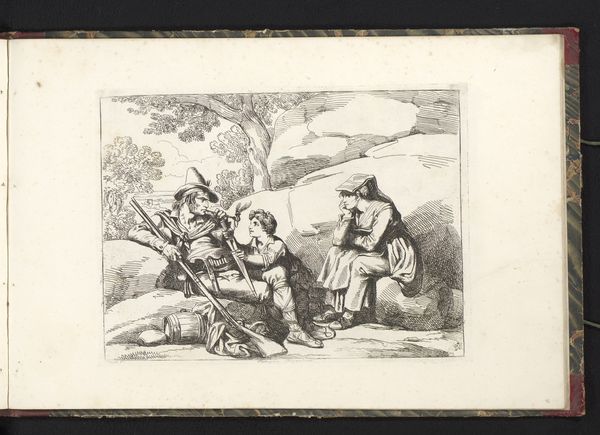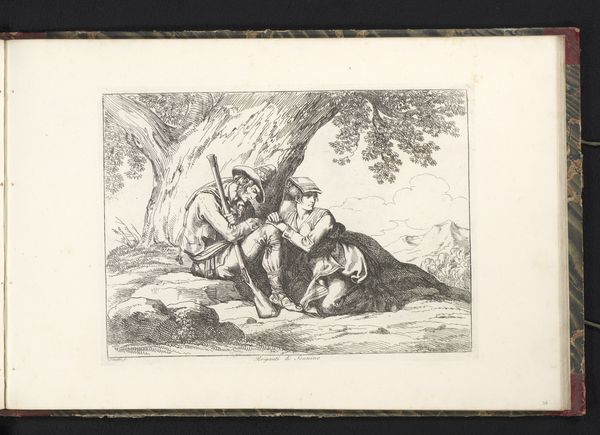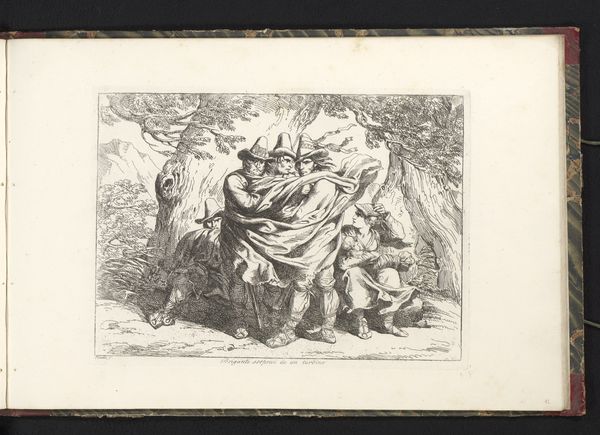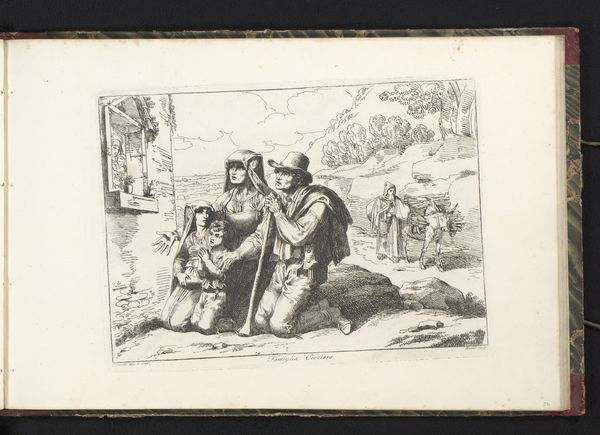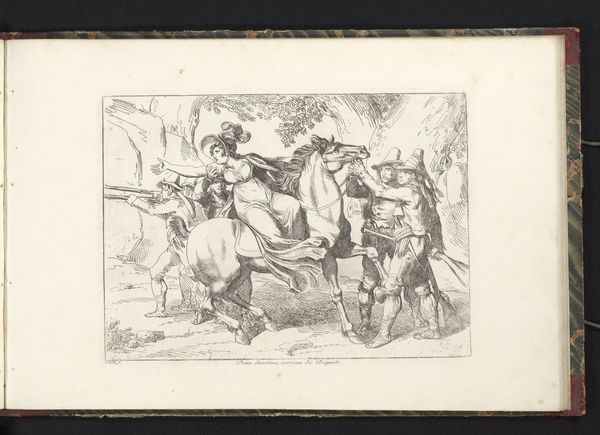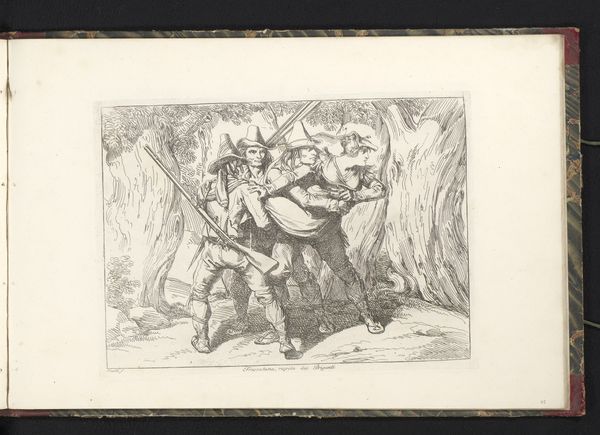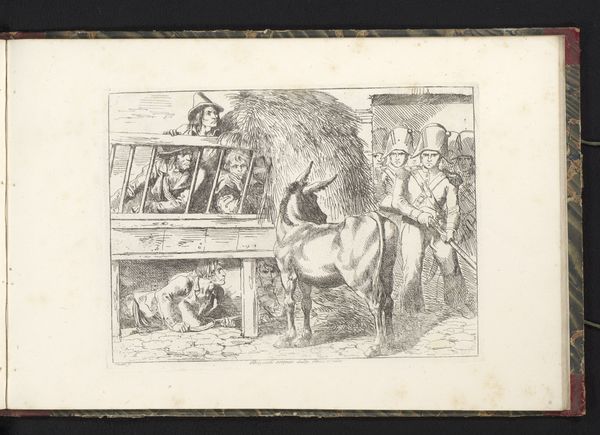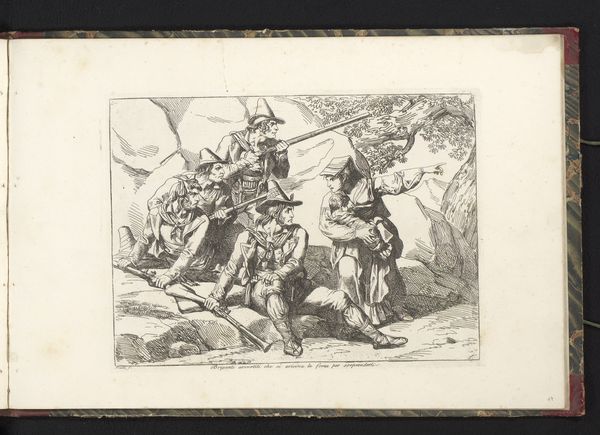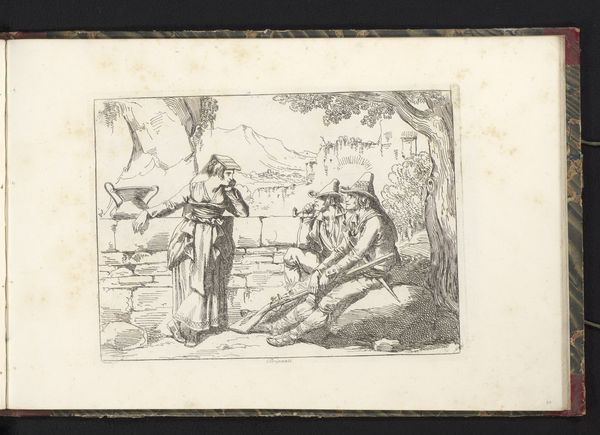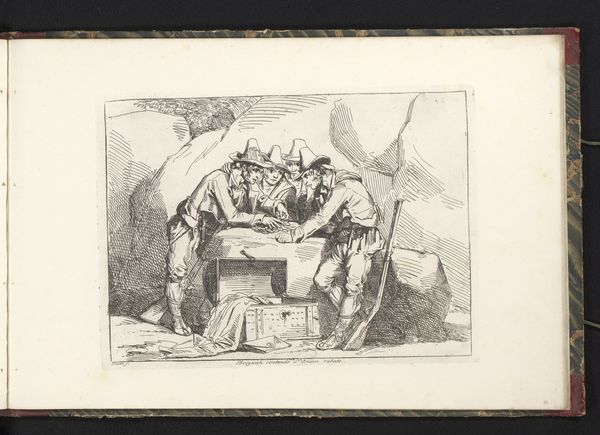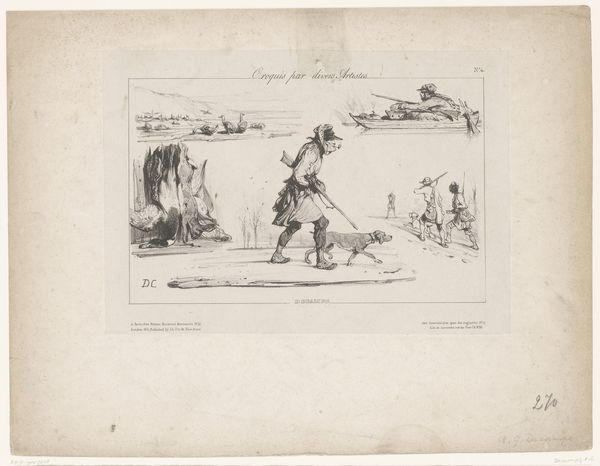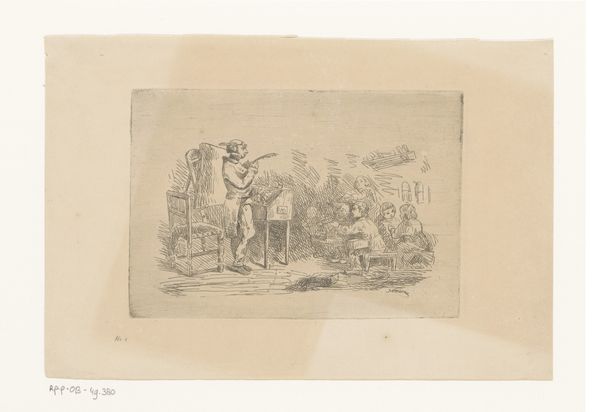
#
toned paper
#
pen sketch
#
sketch book
#
personal sketchbook
#
pen-ink sketch
#
pen and pencil
#
pen work
#
sketchbook drawing
#
storyboard and sketchbook work
#
sketchbook art
Dimensions: height 205 mm, width 276 mm
Copyright: Rijks Museum: Open Domain
Curator: Looking at this pen and ink sketch entitled "Card Playing Bandits" created by Bartolomeo Pinelli between 1819 and 1823, the first thing that strikes me is the strong, yet delicate line work. What stands out for you? Editor: The setting. The rocks loom large, and a cluster of soldiers gather at a distance. You get the sense of an immediate contrast between rest and potential disruption—all executed in simple monochrome. Curator: Precisely! The figures are arranged within this shallow pictorial space, engaging in the card game. Consider how Pinelli uses cross-hatching to define form and create tonal variation, thus enhancing the volumetric quality. This technique emphasizes the material nature of the figures and setting depicted. Editor: I am more fascinated by what is beyond the rocks. It gives insight to who these bandits might be running from or where their lives exist on the social hierarchy and how material conditions drive them to gambling while on the run. These aren't gallant heroes, are they? Curator: You are right to observe the looming narrative elements! However, by examining the visual components of composition and form we see a delicate balancing act, drawing the eye to certain points of interaction which adds layers to the scene unfolding before us. The choice of this pen and ink, that economical style with a historical bent gives a nod to established compositional theories. Editor: Established theories which do what? Keep wealth within a select few who commission idealized historical visions. A sketch is accessible. Pinelli is highlighting the labour and economic strife inherent to banditry through readily-available media. These card games weren't carefree pastimes, I reckon; they’re tense, driven by need. Curator: Perhaps, but by directing focus toward the structural composition – the spatial relationship between figures, their gestures and interactions – we engage with symbolic meanings through the very formal elements chosen. Editor: By choosing humble tools and relatable subjects Pinelli presents lives interwoven with material hardship in a period rife with political tension. I would consider him less interested in ideal form than reflecting lives marked by societal structures. Curator: An intriguing perspective that considers art’s place beyond aesthetics. It adds compelling layers for considering Pinelli's art! Editor: Indeed! And hopefully encourages new ways of questioning art's making and interpretation within evolving socioeconomic contexts.
Comments
No comments
Be the first to comment and join the conversation on the ultimate creative platform.

